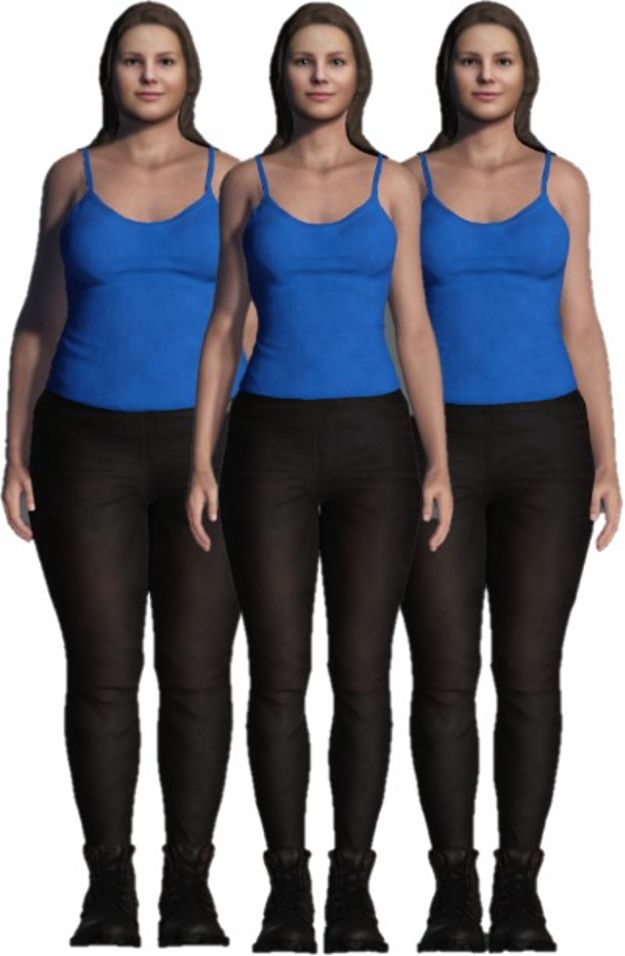You get up in the morning and, as you prepare to leave home, you catch a glimpse of yourself in the mirror. Pausing to check if your clothes and hair look fine, an uncomfortable, but familiar feeling begins to grow inside. “What is this unwelcome extra mass on my belly and hips? “That wasn’t there before”, “Have I gained weight?”, “I think I may need to start going to the gym”.
If you can relate to this situation you are part of many, men and women, who are dissatisfied with their bodies due to weight-related concerns. However, they often struggle to embark on, or to maintain, a healthier lifestyle due to various obstacles such as busy schedules, family responsibilities, tiredness, lack of motivation, among many others.
Even a few extra kilograms can significantly impact one’s body image, and the perception of the self-worth associated with it. This issue is particularly prevalent among females, and has become more apparent in our modern society where appearance seems to be one of the primary social values. Vulnerable populations (such as children, adolescents and young adults), are at risk of seeing their self-esteem diminished, affecting their social interactions and their relationships including (and sometimes mainly) with their partners. All this together, has the potential of leading to social avoidance and isolation, eating disorders, depression and anxiety.
Given the multitude of contributing factors that are involved (such as genetics, family dietary and exercise habits, social environment, social support, and personality traits) addressing this complex issue requires a multifaceted approach. To effectively tackle such complexity, it is prudent to break down the problem into smaller components. This approach is being implemented in the SOCRATES Project, where the different research groups involved are dedicated to examining various facets of the issue.
At Maastricht University, we primarily focus on two aspects: (1) Behavioural: motivation to change to a healthier lifestyle and (2) Neurological: the underlying brain mechanisms associated with body perception.
The first concern led us to conduct a behavioural study using Virtual Reality, with the research question: “Does seeing yourself in different body shapes (obese / healthy-weight / overweight) influence the readiness to change to a healthier lifestyle?”
In this study, that specifically targeted an overweight population, participants were asked to perform various physical exercises while embodying one of the three different virtual bodies. The results showed a significant increase in readiness to change (to a healthier lifestyle) after participants embodied the obese or the healthy-weight avatar. This can be interpreted as a desire by the participants either to reach the “desired” healthy-weight body or to avoid the “undesired” obese body.
Further analysis is currently underway to explore the correlation between body movements and the embodied avatars, aiming to determine if a specific virtual body shape restricts or enhances the participants´range, speed and extension of movement. This analysis aims to deepen our understanding of how different avatars could affect physical capabilities, thus providing valuable insights into the broader realm of our own body perception and its implications.
Future work could include conducting a long-term follow-up of the participants, to assess the duration these effects over time. Nevertheless, these results are already demonstrating promising potential in boosting motivation for engaging in physical activity. As a result, they hold the capacity to contribute to future enhancements in self-image, as well as overall physical and mental well-being.
The second topic we focus on, is the underlying brain mechanisms involved in body perception, which we explore through an electroencephalographic (EEG) study in addition to VR. Our objective is to observe EEG responses to different bodies in terms of body shape (obese / healthy-weight) and identity (self / generic). This study is currently in the data collection phase.
The combination of EEG and VR makes our study novel and one of the few published studies utilising these two technologies in conjunction. This approach will provide insights into how different bodies are processed in the brain, and the role of lookalike avatars in this process.
In conclusion, our research focuses on two key aspects: behavioural changes, and brain electrical responses to different body types. Our aim is to bring real-world applications, offering tangible solutions and interventions that can positively impact individuals struggling with weight-related concerns.
By addressing both behavioural patterns and neurological responses, we aspire to reach a deep understanding on the issue, to contribute in promoting healthier lifestyles and, as ultimate goal, to help in the improvement of the overall well-being of those affected by weight-related challenges.
About the author
Brenda E. Ryan is a clinical psychologist and PhD student in biomedicine at the University of Barcelona. She is being supervised by Mavi Sanchez-Vives and Mel Slater, at IDIBAPS and Event Lab respectively. Her doctoral thesis focuses on the use of Virtual Reality in psychotherapy, particularly in the treatment of depressive and anxiety symptoms. She is currently collaborating on the SOCRATES project at Maastricht University, under the supervision of Beatrice de Gelder, working on body perception and brain responses to different body shapes, which are measured by electroencephalography (EEG).

